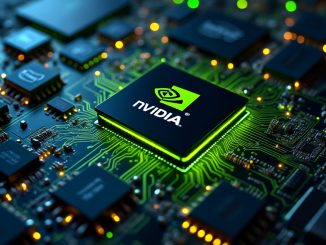
Researchers have been chasing after the dream of quantum computing for quite awhile now. And it’s easy to understand why.
Currently, conventional computers, even the fastest and most powerful ones, theoretically pale in comparison with quantum computers. And it’s mainly because of the way the respective computers process data.
A traditional computer uses bits that can only take on the form of either 1 or 0. On the other hand, a quantum computer uses qubits (short for quantum bits) which can take on the form of either 1 or 0, or 1 and 0 simultaneously. And it can do this via the bizarre quantum behavior known as superpositioning — being able to be in two states at once. This extraordinary ability is what allows a quantum computer to process data much faster than a conventional computer as it can perform more than one calculation at a time. To be more specific, while at a superposition, one qubit can do two calculations; two qubits can do four calculations; three qubits can do eight calculations; and so on.
By itself, the very idea of superpositioning is already hard to ponder. What makes it even more complicated is the thought that as soon as superpositioning is detected, measured, or simply observed in some way, the system collapses, and the quantum computer reverts to an ordinary computer. This is what makes building a quantum computer so challenging.
There’s this general belief that for a quantum computer to achieve processing power equal to today’s supercomputers — what’s being referred to as quantum supremacy — it has to be working at least 49 qubits. Anything higher and its performance will be completely out of any conventional computer’s reach.
While there have already been a few simulations using up to 6 qubits and one done at 42 qubits, the feat achieved by Thomas Häner and Damian S. Steiger of the Institute for Theoretical Physics at Swiss Federal Institute of Technology (ETH Zurich) tops them all as they have succeeded in simulating the largest quantum device so far — a 45-qubit circuit. It’s not yet the 49-qubit circuit being aspired, but it’s pretty close.
The simulation was done at the National Energy Research Scientific Computer Center (NERSC) using the supercomputer called Cori II. All the technical jargon aside, what this achievement proves is that a 49-qubit device is nearing our reach, and the simulation done by Häner and Steiger can be used as a standard or precedent for succeeding quantum supremacy experiments. Google, IBM and all the other quantum computer developers might all benefit from looking into this 45-qubit simulation.
The race to quantum supremacy is fierce. But there’s no denying that the company who gets to be the first will not be the sole winner in this race. Considering that quantum computers are being envisioned as instruments that could help solve some of the world’s worst and most urgent problems, all of humanity will certainly benefit when the first practical quantum computer is finally built.
Häner and Steiger’s work are detailed in a paper entitled “0.5 Petabyte Simulation of a 45-Qubit Quantum Circuit” published through arXiv.org.




Leave a Reply